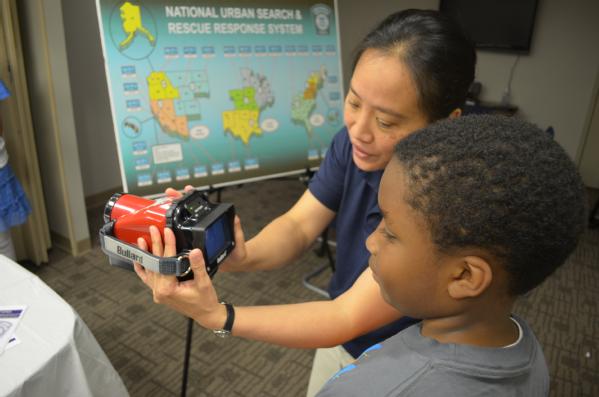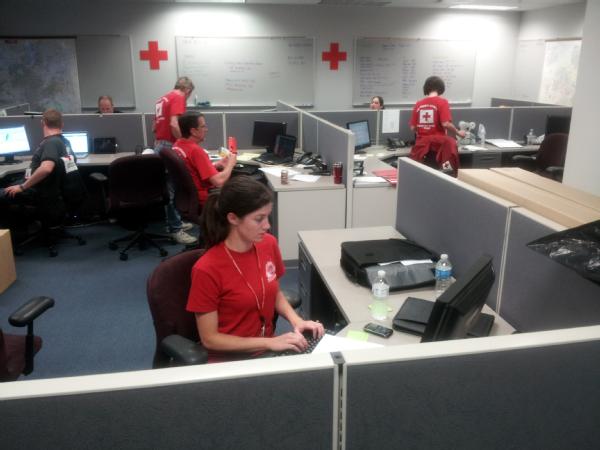Posted by: Lars Anderson, Director, Public Affairs
At the end of each week, we post a "What We’re Watching" blog as we look ahead to the weekend and recap events from the week. We encourage you to share it with your friends and family, and have a safe weekend.
Weather Outlook
This evening, NOAA is forecasting a slight risk for severe thunderstorms that can produce tornadoes for portions of the Central Plains. We urge residents in this area to monitor weather conditions and listen to NOAA weather radios. Here are some terms you should be familiar with if watches or warnings are issued in your area:
Thunderstorms can bring heavy rains, winds, and lightning. If you hear thunder, seek shelter indoors. Stay away from doors and windows, and move to an interior room or basement.
- Severe Thunderstorm Watch: Tells you when and where severe thunderstorms are likely to occur. Watch the sky and stay tuned to NOAA Weather Radio, commercial radio, or television for information.
- Severe Thunderstorm Warning: Issued when severe weather has been reported by spotters or indicated by radar. Warnings indicate imminent danger to life and property to those in the path of the storm.
- Tornado Watch: Tornadoes are possible. Remain alert for approaching storms. Watch the sky and stay tuned to NOAA Weather Radio, commercial radio, or television for information.
- Tornado Warning: A tornado has been sighted or indicated by weather radar. Take shelter immediately.
Additionally this weekend, heavy rain is expected for parts of the Central Plains and the Middle Mississippi Valley. Temperatures much below normal are expected for parts of the Eastern Great Lakes, Mid-Atlantic, and Northeast.
Severe drought conditions are expected to continue throughout the Southeast, Mid-Atlantic, New England, Central and Southern Plains, Upper Mississippi Valley and parts of the Southwest.
Weather conditions can quickly change, so we encourage everyone to monitor your area's local forecast by visiting weather.gov or mobile.weather.gov on your mobile device.
Severe Weather Preparedness Week Recap
This week marked the first ever National Severe Weather Preparedness Week. In partnership with NOAA, we’ve emphasized the importance of individuals, businesses, nonprofits and families taking the necessary steps to discuss their emergency plans and to know what to do before severe weather strikes.
One year ago today, devastating tornadoes tore through the state of Alabama. Severe weather can strike at any moment without much warning. We encourage you to take the first step toward getting prepared for severe weather by pledging to prepare. Become a force of nature in your community by sharing what you’ve done to get prepared, and help others get ready for severe weather.
Visit www.ready.gov/severeweather and in case you missed them, here’s a recap of all our guest blogs from the week.
- Be a Force of Nature in Your Community
- Feeling Safe Being Safe is taking Hawaii by Storm
- A Meteorologist's Perspective on Planning and Preparing for Severe Weather
- Red Cross: Preparing for the Storm
- Severe Weather Preparedness Week, What We’re Doing to Prepare
- ‘Set to Go’ for Anything
- Remembering April 27
April 26 was National Bring Your Kids to Work Day. Administrator Fugate took a few moments to speak with the kids who accompanied their parents to work to test how prepared they really were. Surprisingly, the kids all passed and pledged to go home and create or update their family’s communication plan, then spread the word to all of their friends.
Here are a few photos from the events at FEMA Headquarters.
 Washington, D.C., April 26, 2012 -- Administrator Craig Fugate answers questions from children via video-teleconference for Bring Your Kids to Work Day.
Washington, D.C., April 26, 2012 -- Administrator Craig Fugate answers questions from children via video-teleconference for Bring Your Kids to Work Day.
 Washington, D.C., April 26, 2012 -- Children listen and watch as other children from different regional offices ask questions to FEMA Administrator Craig Fugate via Video-Teleconference.
Washington, D.C., April 26, 2012 -- Children listen and watch as other children from different regional offices ask questions to FEMA Administrator Craig Fugate via Video-Teleconference.
 Washington, D.C., April 26, 2012 -- FEMA Administrator Craig Fugate encourages children to take an active role in helping prepare their families for an emergency for Bring Your Children to Work Day 2012.
Washington, D.C., April 26, 2012 -- FEMA Administrator Craig Fugate encourages children to take an active role in helping prepare their families for an emergency for Bring Your Children to Work Day 2012.
 Washington, D.C., April 26, 2012 -- Children got the opportunity to learn about some of the service FEMA's programs and partners provide. In this photo, a representative from Urban Search and Rescue demonstrates some of the equipment used when teams are deployed.
Washington, D.C., April 26, 2012 -- Children got the opportunity to learn about some of the service FEMA's programs and partners provide. In this photo, a representative from Urban Search and Rescue demonstrates some of the equipment used when teams are deployed.
Visit www.ready.gov/kids for preparedness games and activities to help get your kids prepared for emergencies.


